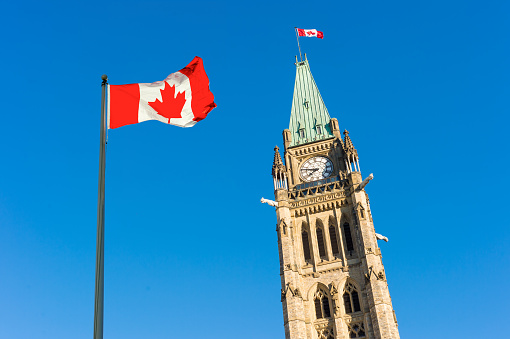Canada and Quebec: A Complex Relationship
The relationship between Canada and Quebec has been marked by a unique cultural, political, and historical dynamic. French-Canadian society has contributed significantly to Canada’s identity, yet the province of Quebec has faced challenges regarding its place within the larger Canadian federation. Quebec’s desire for autonomy has shaped the country’s history and continues to influence national debates, particularly surrounding issues of language, identity, and independence.
The Quiet Revolution and the Push for Independence
In the years following World War II, Quebec’s French-Canadian society entered what is often referred to as its golden age. This period was characterized by rapid social, cultural, and political changes. The 1960s saw the emergence of the Quiet Revolution, a peaceful period of intense social change where Quebecers pushed for greater control over their own affairs.
The movement for independence was fueled by concerns over the preservation of the French language and culture in the face of the growing dominance of English-speaking Canada and North America. The Quiet Revolution brought about significant reforms, particularly in education, healthcare, and the secularization of government institutions.
The Role of Language in National Unity
In response to rising tensions, the Official Languages Act was passed in 1969, ensuring that both French and English would be recognized as official languages of the federal government. This was the outcome of the Royal Commission on Bilingualism and Biculturalism (1963), which aimed to promote bilingualism and address the needs of Quebec’s French-speaking population within a predominantly English-speaking Canada.
La Francophonie, an international organization of French-speaking nations, was also founded in 1970 with Canada’s active participation, further reflecting the country’s commitment to preserving French language and culture both within Canada and abroad.
The Push for Quebec Independence
Despite these efforts to promote bilingualism and biculturalism, the movement for Quebec independence continued to grow. In 1980, Quebec held a referendum on sovereignty, asking Quebecers whether they wished to separate from Canada. The result was a resounding “No” to independence, but the debate did not end there. Another referendum in 1995 was much closer, with just 1% separating the “Yes” and “No” votes. Although Quebec has not yet achieved independence, the issue remains an important and often contentious topic in Canadian politics.
One of the significant events in the relationship between Quebec and Canada was the patriation of the Constitution in 1982. The Constitution Act, 1982, was amended to include the Charter of Rights and Freedoms, but Quebec did not sign the agreement, as it felt its interests were not adequately addressed. This remains a source of resentment for some in Quebec, and the province has not signed the Constitution to this day.
Arts and Culture in Canada: A Reflection of Diversity
Canada is home to a diverse and vibrant arts scene that reflects the multicultural fabric of the nation. Artists across various disciplines—literature, music, visual arts, performing arts, and sports—have made significant contributions to both Canadian and global culture.
Literature
Canada’s literary landscape is rich and diverse, with authors such as Stephen Leacock, Louis Hémon, and Margaret Laurence shaping the national narrative. More recent authors like Michael Ondaatje, Joy Kogawa, and Rohinton Mistry have added complexity to Canada’s multicultural identity, exploring themes of immigration, identity, and belonging.
Visual Arts
In the visual arts, Canada is famous for the Group of Seven, a collective of artists who painted iconic landscapes depicting the wild and untamed beauty of the Canadian wilderness. Emily Carr focused on Indigenous art and the forests of the West Coast, while Kenojuak Ashevak brought attention to modern Inuit art, helping to establish its international presence. Louis-Philippe Hébert, a renowned sculptor from Quebec, left an indelible mark on Canadian history with his monumental works.
Performing Arts
The performing arts in Canada are equally vibrant, with theatre companies, ballet troupes, and orchestras garnering international acclaim. Canadian filmmakers like Denys Arcand, Norman Jewison, and Atom Egoyan have made their mark on the global stage. Canadian television also enjoys popularity, with many series having a substantial following at home and abroad.
Sports and Athletics
Canada has also excelled in the world of sports, producing world-class athletes and winning numerous Olympic medals. The country is best known for ice hockey, where Canadian teams and players have dominated the international stage. Wayne Gretzky, considered one of the greatest hockey players of all time, is a Canadian icon.
Other notable Canadian athletes include Donovan Bailey, who set a world record in the 100 meters and won two Olympic gold medals in 1996, and Chantal Petitclerc, a wheelchair racer who has won multiple Paralympic gold medals. Terry Fox, who lost his leg to cancer, became a national hero for his Marathon of Hope, a cross-country run to raise funds for cancer research. Rick Hansen followed in Fox’s footsteps, circumnavigating the globe in a wheelchair to raise money for spinal cord research.
Conclusion
The relationship between Canada and Quebec is one of both unity and tension, as Quebec continues to assert its distinct identity within the Canadian federation. From the Quiet Revolution to the ongoing debates over independence, Quebec’s culture and history remain integral to Canada’s national story.
At the same time, Canadian arts and culture showcase the country’s rich diversity and global influence. From literature to sports, Canadian talent has left an indelible mark on the world stage, reflecting the multifaceted nature of Canadian identity. The ongoing contributions of Quebec to these artistic realms, combined with the province’s unique political and cultural challenges, continue to shape Canada’s future as a nation.
